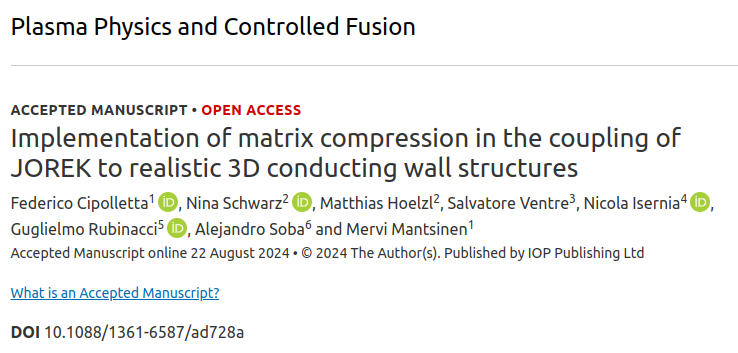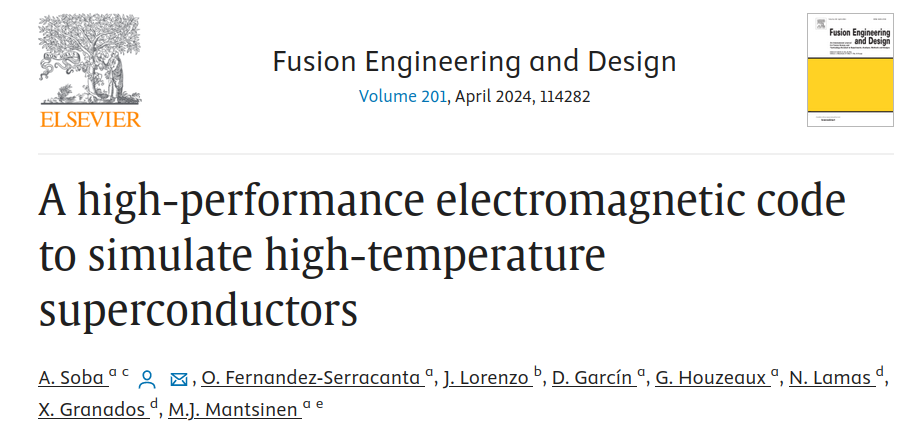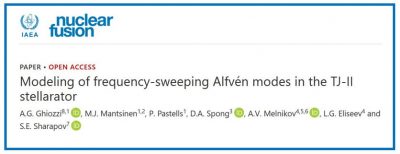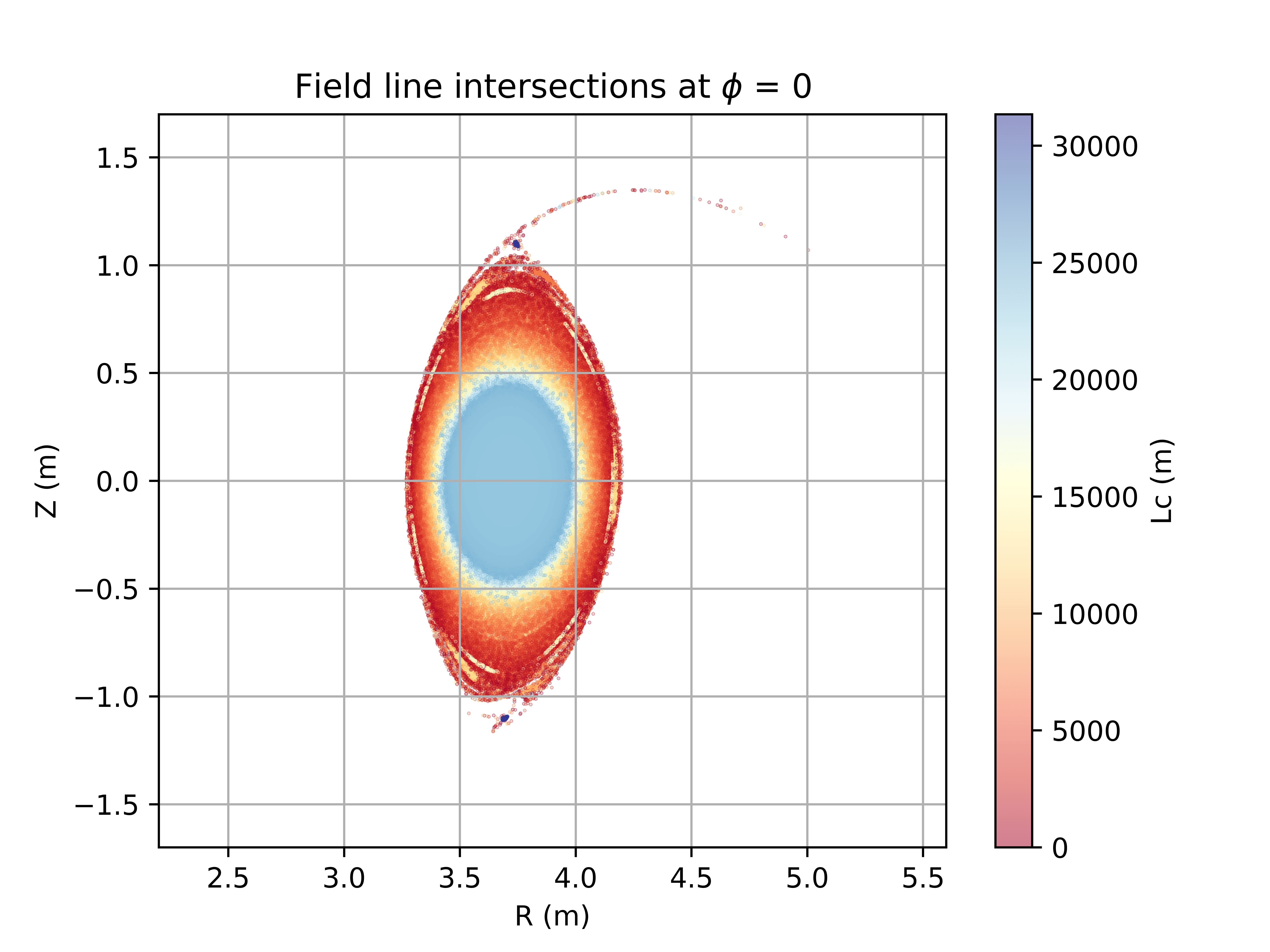
A method to control and optimize memory consumption has been implemented in the JOREK MHD code. It has been documented in the manuscript titled “Implementation of matrix compression in the coupling of JOREK to realistic 3D conducting wall structures” by Federico Cipolletta and collaborators, which was accepted for publication in the Plasma Physics and Controlled Fusion (PPCF) journal on 22/08/2024 and is available at this link.





